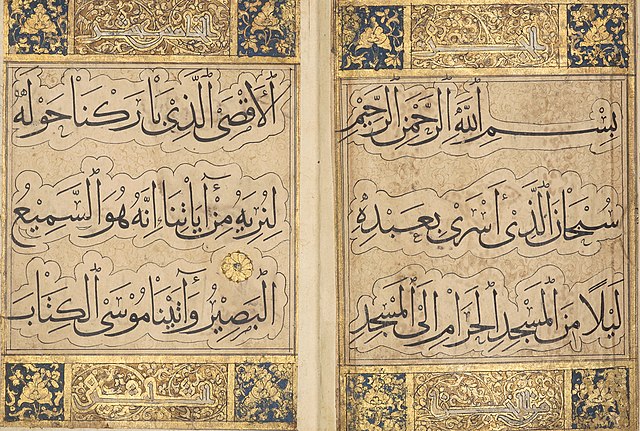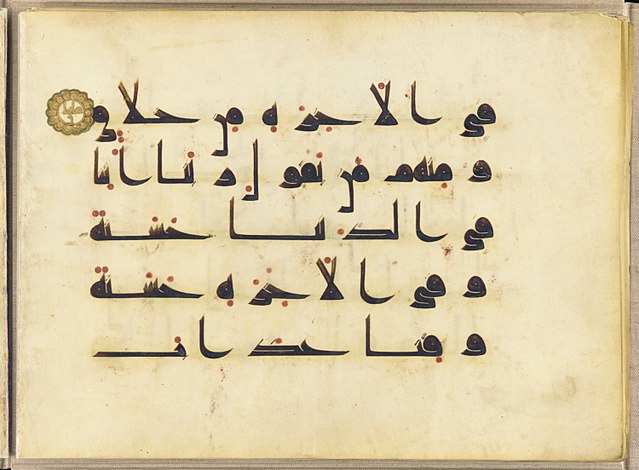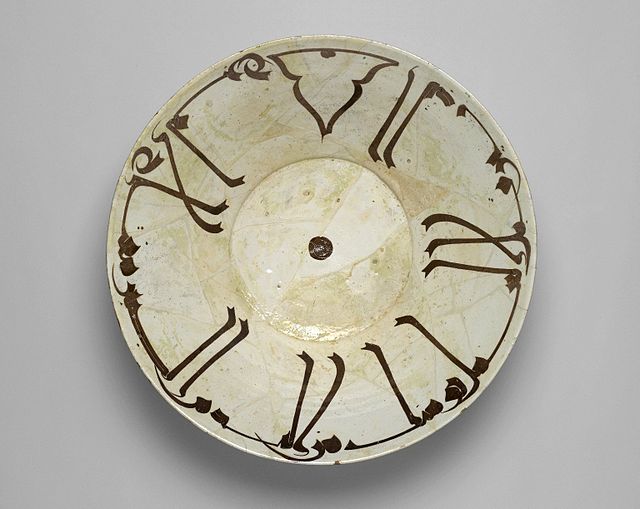The Hurufiyya movement (Arabic: حروفية ḥurūfiyyah adjectival form ḥurūfī, 'of letters' is an aesthetic movement that emerged in the second half of the twentieth century amongst artists from Muslim countries, who used their understanding of traditional Islamic calligraphy within the precepts of modern art. By combining tradition and modernity, these artists worked towards developing a culture-specific visual language, which instilled a sense of national identity in their respective nation-states when many of these states were shaking off colonial rule and asserting their independence. They adopted the same name as the Hurufi, an approach of Persian Sufism which emerged in the late 14th–early 15th century. Art historian Sandra Dagher has described Hurufiyya as the most important movement to emerge in Arabic art in the 20th century.
An Old Sufi Laments His Lost Youth, page from a Sufi manuscript, 13th century. Sufi art served as part of the inspiration for the al-hurufiyya movement.
Parviz Tanavoli and his Lovers Heech
Artist, Dia-Al-Azzawi, exhibits the style of the Calligraphy Combinations School of Hurufiyya art
Roof of Frere Hall, Karachi, Pakistan, c. 1986. Pakmural by artist, Sadequain Naqqash, integrates calligraphy into a contemporary artwork
Islamic calligraphy is the artistic practice of handwriting and calligraphy, in the languages which use Arabic alphabet or the alphabets derived from it. It includes Arabic, Persian, Ottoman, and Urdu calligraphy. It is known in Arabic as khatt Arabi, which translates into Arabic line, design, or construction.
The Surah "Al-Isra'" copied by the 13th century calligrapher Yaqut al-Musta'simi in Muhaqqaq script with Kufic incidentals.
9th century Qur'an, an early kufic example from the Abbasid period
Bowl with Kufic Calligraphy, 10th century. Brooklyn Museum
Muraqqa script by Mehmed Şevkî Efendi of the two intro pages of the Quran








